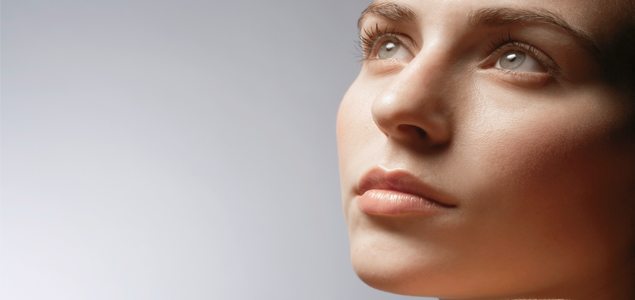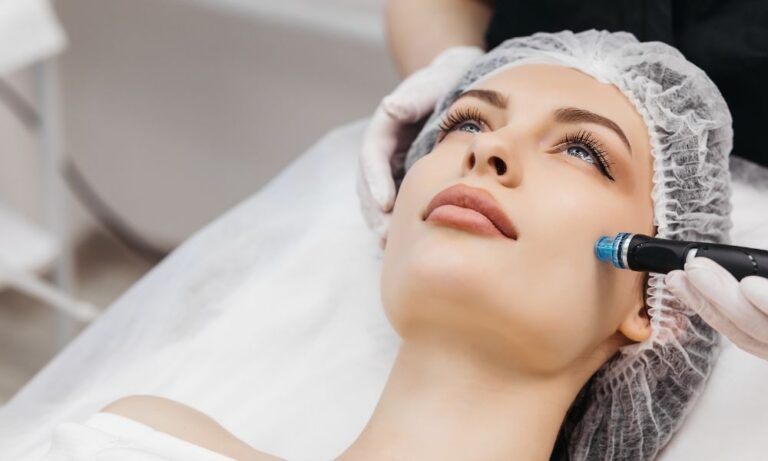What industry-changing innovations can we expect in 2024, and how will the next generation of beauty products and services look, feel and behave, and what will they do?
Wired wear
Sony recently filed a patent for a wig that contains small sensors and uses wireless technology to connect to other devices. Wearable gadgets are predicted to be huge in the future, thanks to the launch of Google Glass, a wearable computer with an optical head-mounted display. And other wearable technologies, like Sony’s SmartWig, are a natural extension of beauty accessories.
As sensors become ever smaller, false nails, eyelashes and even reusable cosmetics (see below) could one day be embedded with this technology.
Imagine putting on your make-up and having it analyse and communicate your skincare needs and concerns wirelessly to your beautician or cosmetics counter prior to your arrival.
Reusable cosmetics
Michael Nolte, forecast director at the Paris-based beauty industry trend and intelligence company Beautystreams, predicts that self-regenerating and touch sensitive materials will be big news in the future.
“One of Stanford [University’s] researchers recently created a material that repairs itself after being cut, like the human skin. Imagine packaging that ‘repairs’ itself after being broken or a lip gloss that stays in place perfectly the whole day, that you can [take] off in the evening like clothing and reuse it the next day.”
PRO-AGE
The next 10 years will be the decade that sees consumers and beauty companies embracing age, rather than fighting it. The year 2013 was a huge one for the prominence of older women in fashion and media. The year’s hero was style icon Iris Apfel, who’s in her early 90s. Apfel rose to prominence with the influence of Ari Seth Cohen’s Advanced Style blog, book and upcoming film.
Advertising campaigns in 2013 featured the likes of 40s-plus Nicole Kidman for Jimmy Choo, Julia Roberts for Lancôme and Christy Turlington for Prada, while British make-up brand Illamasqua’s 2013 campaign, Beauty Before Age, featured street-cast women up to age 72.
MiNDFOOD predicts a filter-down impact, as brands create pro- rather than anti-ageing ranges. Research has found that women are more concerned with radiance than wrinkles; according to cosmeticbusiness.com, only one in four Baby Boomers use facial skincare products with anti-ageing properties.
Digital perfumes
For the past few years, perfume e-tailers such as LA-based Commodity and apps like fragrance expert Roja Dove’s Scent Selector have been guiding consumers through the online purchase of perfumes, which are then posted out for them to trial. We can expect this concept to take the next step over the coming decade, as 3D printers merge with scent creation and are able to “print” olfactory notes and blended perfumes for customers in the comfort of their home.
Respected fragrance nose Francis Kurkdjian recently told influential British trend forecasting and brand strategy agency The Future Laboratory that 3D olfactory printers would also one day allow perfumers to create new scent molecules to engineer truly individualised scents.
“Consumers are seeking what suits [them], individually, rather than buying into things they’re told to … 3D Printing provides a huge array of potential to fine tune this even further and also engage with consumers, offering them a level of interaction in the process and room to experiment, too. It also invites them to become experts in scent and the science of scent.”
Inside out
Imagine taking a pill to fix your beauty ills. We’re not talking the usual collagen-boosting supplements here, but drugs and neutraceuticals that perform external miracles from the inside out.
Nolte says, “With L’Oréal’s anti-gray hair pill launching in 2015, ingestible beauty solutions [will] gain interest. Concepts of effective eatable deodorants and perfumes, treating from the inside out, are approaches already existing. Thinking further, this could evolve into effective ingestible skincare treatments, and why not pills that change the eye, skin or hair colour of the consumer?”
Emerging world brands
In the 1970s, the Western world had never heard of Japanese beauty companies. Now, brands like Shiseido and SK-II are ubiquitous and have influenced Western businesses in return. Get ready for the next influx of brands from Asia and Latin America.
Natura is a Brazil-based beauty company with an emphasis on natural ingredients and ecological practices, with huge influence across Latin America, USA and France, while Chinese beauty brand Herborist takes a traditional Chinese medicine approach to product formulations and ingredients – it was recently tipped to be the country’s first beauty brand to break into
the West.
Luxury brand giant LVMH’s private equity fund L Capital Asia recently invested in another Chinese brand, Marubi, and Estée Lauder launched their own dedicated Asian skincare brand, Osiao.
DIY Cosmecuticals
The rise of home chemistry kits is seeing consumers making their own medical drugs, as DIY biology companies like Ginkgo BioWorks – which sells engineered organisms – allows customers to
bioengineer medicines.
In her film The Alchemist, Design Academy Eindhoven student Nina van Bart predicts the bathroom will become a laboratory, with people engineering products by creating drifting mists, nutrient membranes and solidified balms.
Active skincare
Sport-focused skincare products are an emerging niche. The Future Laboratory points to Spanish brand Fisix, whose bodycare range is designed for different stages of athletic activity, with some products to stimulate and others to soothe.
The University of Sheffield recently collaborated with the London College of Fashion to create CatClo, a detergent that when washed onto clothing removes pollutants from the air using photocatalysts (materials that in the presence of light catalyse chemical reactions). Nanoparticles of titanium dioxide grip onto the fabric when washed; after coming into contact with nitrogen oxides in the air, they react with these pollutants and oxidise them in the fabric. Such technology could be added to bodycare formulations, such as moisturisers, to remove body odours and excreted toxins during workouts.
Self-cleaning cosmetics – that’s one future beauty trend we can’t wait to see.





